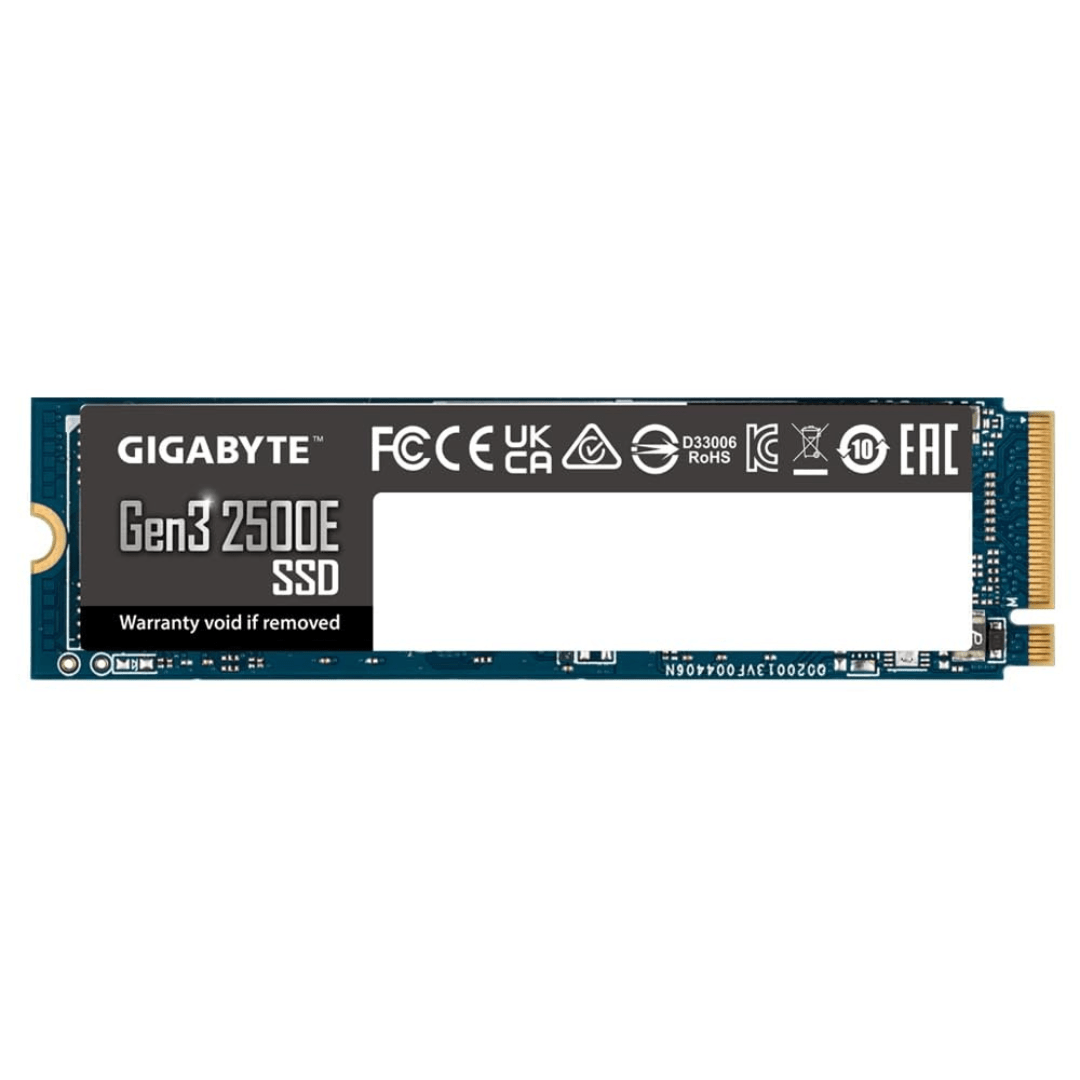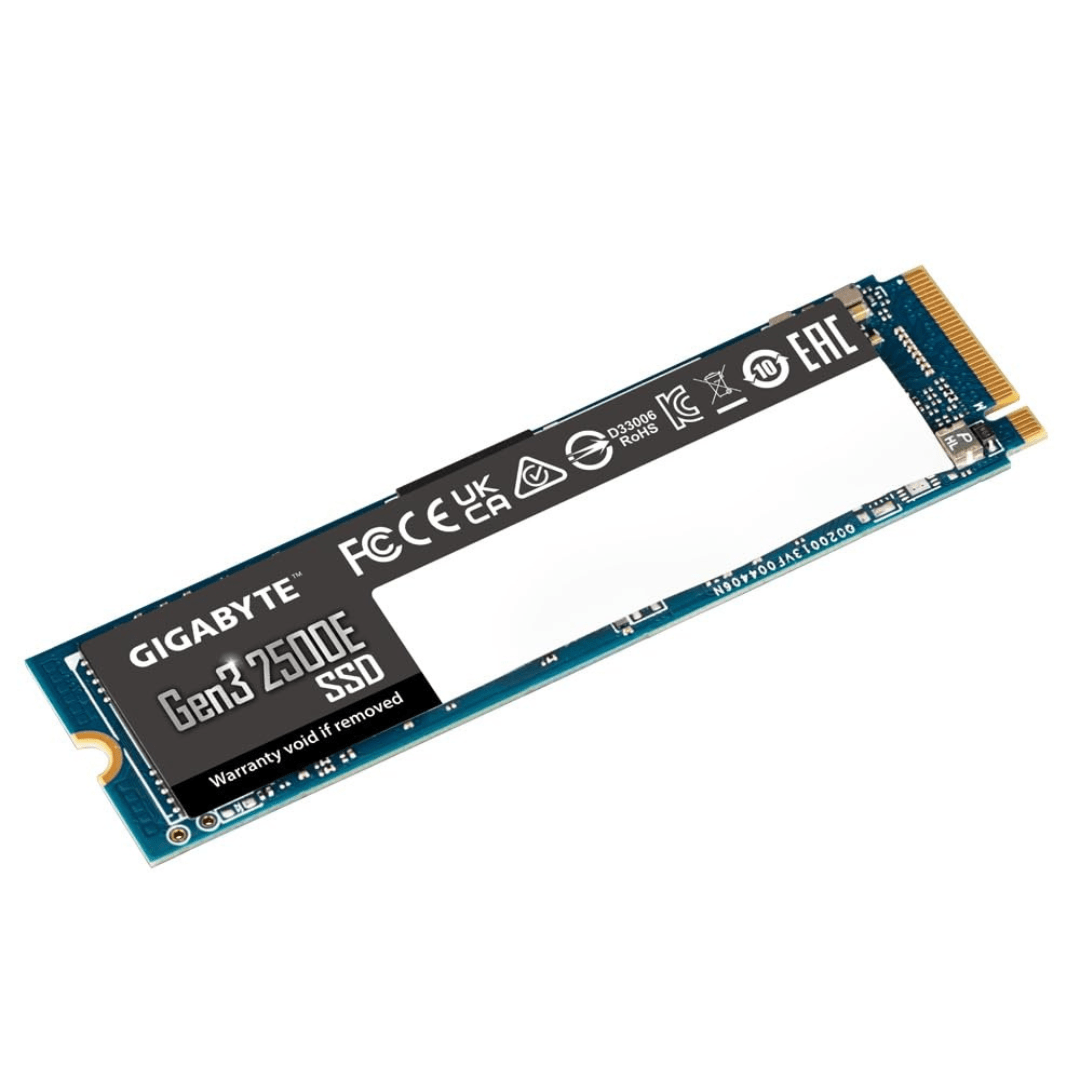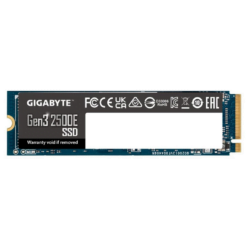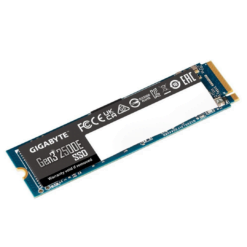₹ 8,000 Original price was: ₹ 8,000.₹ 3,809Current price is: ₹ 3,809.
- GIGABYTE 500GB NVME
- 500 GB Capacity
- M.2 2280 PCIe 3.0×4, SATA
- Multitasking, 2280 Inches
- Desktop, Internal Hard Drive
- 3 Year Warranty
Sold out
----------------------------------------- Delivery Time: 4-5 days approx
- Serving 20000+ PIN Codes
ENQUIRE NOW
----------------------------------------Specification of GIGABYTE 500GB SSD NVME
Interface:
- PCI Express 3.0 x4 NVMe 1.3 – Utilizes the NVMe 1.3 protocol over the PCIe Gen 3 x4 interface. This offers significantly faster performance compared to traditional SATA SSDs, making it suitable for tasks that involve frequent reading and writing of data, such as gaming, video editing, and professional applications.
Form Factor:
- 2 2280 – This compact and slim design (22mm wide and 80mm long) makes it ideal for modern laptops and desktops that have M.2 slots specifically sized for 2280 form factor drives.
Capacity:
- 500GB – Provides a good balance of storage space for essential applications, operating system, frequently used files, and some larger games or media files.
Performance:
- Sequential Read Speeds: Up to 2,300 MB/s – Indicates the theoretical maximum speed for reading large sequential files like video edits or large games. This translates to faster boot times, application launches, and file transfers.
- Sequential Write Speeds: Up to 1,500 MB/s – Represents the theoretical maximum speed for writing large sequential files. While not as fast as read speeds, it’s still significantly faster than SATA SSDs.
- Random Read/Write IOPS (not officially advertised): While not officially provided by Gigabyte, random read/write IOPS are typically lower than sequential speeds but are more indicative of real-world performance for small file operations. Look for figures around 60K for reads and 240K for writes.
Endurance:
- TBW (Total Bytes Written): Not officially specified by Gigabyte, but some sources estimate it to be around 120 TBW. This represents the total amount of data that can be written to the drive over its lifespan.
- 3-Year Limited Warranty: Provides a standard warranty period for data security in case of hardware failures.
Controller:
- Phison’s Controller – Gigabyte utilizes a Phison controller specifically designed for NVMe SSDs. The exact model number may not be publicly disclosed.
NAND Flash Type:
- High-quality 3D NAND – This type of NAND flash memory offers better endurance, reliability, and potentially faster performance compared to older 2D NAND technology. The specific type of 3D NAND (e.g., TLC, QLC) is not officially revealed by Gigabyte.
Additional Features:
- Host Memory Buffer (HMB) Support: This technology utilizes a portion of the system’s RAM to improve performance, especially beneficial for systems with limited DRAM.
- TRIM Support: Helps maintain optimal performance by allowing the drive to discard unused data blocks.
- M.A.R.T. Support: Enables monitoring of the drive’s health and performance using compatible software.
- Gigabyte SSD Tool Box: A downloadable software application from Gigabyte that allows users to monitor drive health, view information, optimize performance, and perform secure erase.
Best Online Cost of GIGABYTE 500GB SSD NVME
Views: 610
| Brand |
|---|
Only logged in customers who have purchased this product may leave a review.







Reviews
There are no reviews yet.